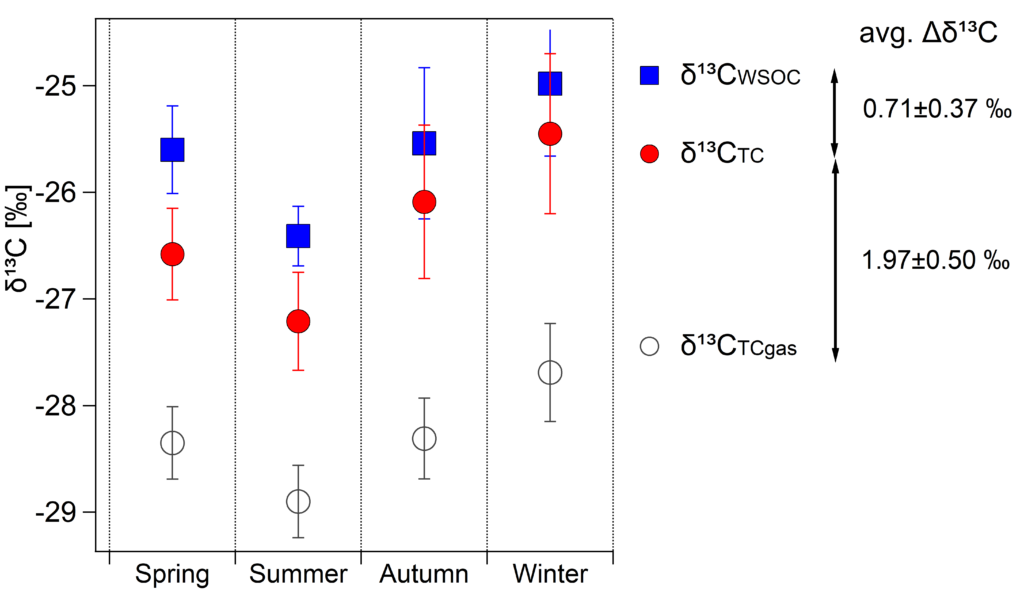The analysis of isotopes in aerosol particles
 The analysis of isotopes in aerosol particles is a modern, still developing method that offers great potential for determining the sources of these particles, but also for studying the processes that take place in the atmosphere. This topic is also the subject of a recent study carried out by a research team from the Department of Aerosol Chemistry and Physics in collaboration with Prof. Kawamura’s team from Chubu University in Japan. The paper, which deals with a systematic seasonal study of the isotopic composition of stable carbon 13C in atmospheric aerosol, was recently published in the prestigious journal Science of the Total Environment.
The analysis of isotopes in aerosol particles is a modern, still developing method that offers great potential for determining the sources of these particles, but also for studying the processes that take place in the atmosphere. This topic is also the subject of a recent study carried out by a research team from the Department of Aerosol Chemistry and Physics in collaboration with Prof. Kawamura’s team from Chubu University in Japan. The paper, which deals with a systematic seasonal study of the isotopic composition of stable carbon 13C in atmospheric aerosol, was recently published in the prestigious journal Science of the Total Environment.
The paper describes research carried out on gas phase and fine aerosol (PM2.5) samples collected directly at the Institute of Chemical Processes Fundamentals in Prague-Suchdol. The samples represent the urban background with the initial assumption that the sources of aerosol particles would be different for different seasons. And indeed, the different δ13C isotope composition especially in winter and summer confirmed different seasonal sources of carbonaceous aerosols. In winter, the isotopic composition corresponded more to anthropogenic sources from heating, while in summer it was more likely to be emissions from biogenic sources. However, the main objective of the study was to determine whether different sources and thus different chemical compositions of the total aerosol would affect the distribution of carbon isotopes between the gas and aerosol phases. The knowledge of the isotope fractionation between these two phases is important for a more detailed study of the processes taking place in the atmosphere. These data can also serve as input parameters for models that are used to determine the source of aerosols. However, contrary to assumptions, detailed analysis has shown that despite the different isotopic compositions of δ13C in different seasons, its fractionation between the gas and aerosol phases is almost invariant. This points to the fact that the fractionation of stable carbon isotopes in the total carbonaceous aerosols in the atmosphere is mainly a physical process, which is not significantly affected by the detailed chemical composition of the aerosol or gas phase. Overall, however, this is still a valuable result that has resulted in a simplified parameter for the development of isotope models for aerosol source determination.
- Vodička P., Kawamura K., Schwarz J., Ždímal V., Seasonal changes in stable carbon isotopic composition in the bulk aerosol and gas phases at a suburban site in Prague, Sci. Total Environ. 149767, 2022. DOI